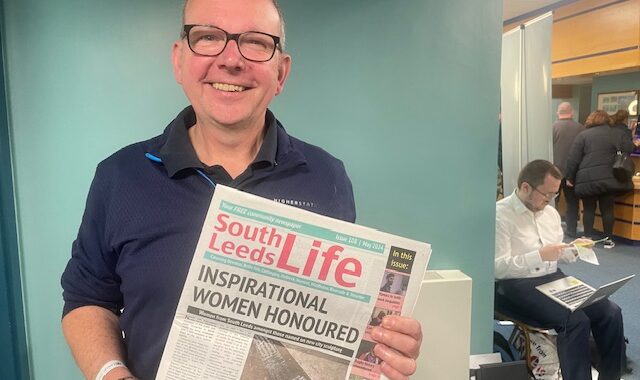The Storini Project: Enriching Content and Enabling Communities to Share and Publish Their Own Stories
Introduction
Throughout the UK, there is ample evidence of an abiding desire for local news and information. People want to know what is going on in their own communities and are making increasing use of digital and mobile technologies to find out. As old business models weaken though, there are fewer journalists on the ground gathering good local stories. Here at Cardiff University’s Centre for Community Journalism, we have seen the difficulties facing local and community publications in getting regular flows of high quality content to meet audience expectation and capture and keep audience interest. This is the story of how we worked with a creative business partner to find a solution based both on technology and on behavioural psychology following a successful bid for research funding to REACT. Storini is a unique and way of involving communities in creating their own news and content and feeding vibrant and dynamic local news hubs. Now in Beta form, Storini is being tested by community journalists in Wales in both English and Welsh and is showing potential for major crowd sourcing of news, views and images.
A growing sector
 Ofcom’s 2013 market report said:
Ofcom’s 2013 market report said:
“The use of online local media sources has increased the most over the past two years, with almost half of respondents (49%) claiming to use the internet more for local news and information. Around four in ten claim to be using local news websites/apps (41% and local community websites/apps (38%) more than two years ago.”
Several things are striking about these figures. First – the pace of change year on year and the opportunity this presents. Secondly – a hint at the response from traditional newspaper publishers who are fast digitizing their operations (whilst also reducing the number of journalists on the ground as advertising revenues fall). Thirdly – the emergence of new forms of provision and providers of local and community news.
The demand for hyper local news – that is, a service relating to a town, village or post code – is also examined in Nesta’s April 2013 report ‘UK Demand for Hyperlocal Media’. This showed that 45 per cent of UK adults had accessed some form of hyper local media with most doing so at least weekly. It showed take-up is being stimulated by the rapid spread of mobile devices such as tablets and smartphones with access to factual information such as news, weather and local service is the main driver. This is shown too, and in more depth, by research on the content and nature of hyper local journalism being carried out at Cardiff and Birmingham University
Our own experience at the Cardiff University’s Centre for Community Journalism has shown that there is huge potential within this growing sector for sourcing news, opinion and the kind of social, policy, and cultural material that is important for community cohesion and empowerment. We know from talking to and seeing the work of hyper local and community news outlets that getting at local information in a usable and verifiable way is key. The question is whether the widespread use of digital and social media for personal use can also be channeled to create community and local collateral and whether hyper local sites can come to be seen as a shared space for this.
This was the basis for a research project following a successful bid to React, which funds collaborations between arts and humanities researchers and creative companies. These collaborations champion knowledge exchange, cultural experimentation and the development of innovative digital technologies in the creative economy.
The Birth of Storini
Working with a hyper local on our doorstep our project tackled the problem of how to create a sustainable digital model for collecting local news content.
Exploring trust, reputation and motivation, creative agency Behaviour and Cardiff University’s Centre for Community Journalism applied behavioural psychology to explore how to motivate local people to become citizen journalists, transforming the act of being involved in local news into a pleasure.
The resulting platform – Storini – is now in use in Beta form in both English and Welsh. Storini – ‘Our Story’ in Welsh – has enabled communities in Cardiff, and Port Talbot to capture images, reactions, news and insights and share them for the first time ever. While still at closed Beta stage, it is about to be tested further in the Rhondda and Aberystwyth.
The Beginning
 Port Talbot is a predominantly urban area in South West Wales with a population of 139,000. Traditionally heavily industrialized, it also has an attractive coastline and countryside. In 2009 both dedicated local papers serving the area closed. In response, a cooperative of journalists and local residents formed a social enterprise to see how local news could be generated and shared. Their research showed that 88% of Port Talbot respondents wanted a local news service and the Port Talbot Magnet was born. Published online, it’s also played a key role in staging and covering local events with participation from the wider community. From the start it has had links with the School of Journalism (JOMEC) in Cardiff University as a champion and as a resource for learning and networking.
Port Talbot is a predominantly urban area in South West Wales with a population of 139,000. Traditionally heavily industrialized, it also has an attractive coastline and countryside. In 2009 both dedicated local papers serving the area closed. In response, a cooperative of journalists and local residents formed a social enterprise to see how local news could be generated and shared. Their research showed that 88% of Port Talbot respondents wanted a local news service and the Port Talbot Magnet was born. Published online, it’s also played a key role in staging and covering local events with participation from the wider community. From the start it has had links with the School of Journalism (JOMEC) in Cardiff University as a champion and as a resource for learning and networking.
The Magnet is created and published by local people for local people to fill a gap and meet a need. Most content is created by a core team of volunteer journalists with a long term aim of raising enough advertising revenue to create employment. Residents and users are encourage to submit content. The more local people submit stories that either timely, topical or compelling, the greater the engagement and flow of local news and the more people are plugged into and have the chance to play a part in the wider community. But, as an ordinary citizen, converting what you see, know and feel to something that could be published and shared may seem daunting and difficult. How, then, to source more and better local news? How to convert knowledge into good quality, trusted content?
The major change in media consumption over the last decade has been the move from passive to collaborative media. The concept underlying Web 2.0 and social media has been one of information sharing, interoperability, collaboration and user-generated content. Where there has been intrinsic motivation to take part in such channels they have been ultra-successful (e.g. Facebook) but converting this success to areas that don’t have such immediate gratification has proved difficult.
The project tackled hyperlocal news from an entirely new angle and created a platform that not only is a toolkit for collecting local news but a motivational tool to engage communities in the process. Once submitted, the editorial team is the hub for news coming in – editing, adding or revising content.
Building Storini
We tested the concept with the editorial team and with local people in Port Talbot during April and May 2013 during development. By the early summer we had a platform that could also be used by a new Welsh language community news service as it set up in Cardiff. Pobl Caerdydd was designed from the start as a digital, more youthful version of a traditional community newspaper Y Dinesydd which is itself part of a network of over 50 Welsh language community papers. The translation of the platform showed that Storini could easily be used in another language with over 60 people signing up on a single day to use it in the Welsh capital. To support this use of the Welsh language on digital channels, the Welsh Government will be funding the development of a Storini app which, early in 2014 will enable Welsh speaking communities all over Wales to shape their community news content.
Available in English too, the mobile app will allow people to capture photos, videos, soundbytes and comments on-the-scene of news as it happens and feed it back instantaneously to the central hub where other users can put it together and create the story as it unfolds.
Storini has always been about giving power to the community to shape their news and celebrating the people create it. Reporting on news through Storini allows people to build their reputation and be seen to be an active member of their community. All reports, photos or comments are fully credited to the community member on the hyperlocal news site and, as people participate more, Storini rewards them with greater controls. So far, Storini has proven to be a hit with people interested Journalism who can use it to show their skills as they work alongside their local news team.
What next?
More hyperlocals are being added to the Beta version of Storini as we prepare to build the mobile app. Others again have registered an interest in signing up once the platform is ready. As we do this, we are very keep to get as much feedback as possible so bookmark the Storini website where all updates will be posted, including when a news team in your area start using it.




